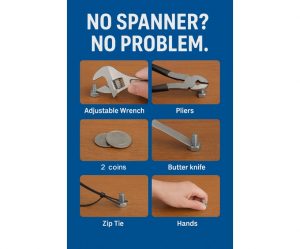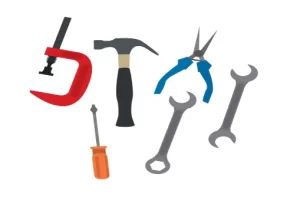How To Safety Use Handtools?
However, their improper use or neglecting safety precautions can lead to accidents and injuries. Prioritizing safety at work is crucial to maintain a secure environment for employees and minimize the risk of accidents. This article provides essential guidelines and best practices for ensuring safety when using hand tools in the workplace.
1.- Selecting the Right Tool for the Job
Using the appropriate hand tool for a specific task is fundamental to safety. Consider factors such as the material being worked on, the tool’s capabilities, and the ergonomics involved. Using the wrong tool can lead to decreased efficiency, damage to the tool or workpiece, and an increased likelihood of accidents.
2.- Inspecting and Maintaining Tools
Regular inspection and maintenance of hand tools are vital to their safe and effective operation. Before use, inspect the tool for any damage, such as cracks, loose handles, or worn-out parts. Replace or repair any faulty tools immediately. Additionally, keep tools clean and lubricated to ensure their longevity and optimal performance.
3.- Using Personal Protective Equipment (PPE)
Wearing appropriate personal protective equipment (PPE) is an essential aspect of workplace safety. Depending on the task and potential hazards, workers should wear gloves, safety glasses, hearing protection, and, if necessary, respiratory protection. PPE serves as a crucial barrier, shielding employees from potential injuries and hazards associated with hand tool usage.
4.- Training and Education
Thorough training and education programs are indispensable in promoting safety awareness among employees. Train workers on proper hand tool usage techniques, including correct handling, operation, and storage. Additionally, familiarize them with the potential hazards associated with different tools and tasks. Regular refresher courses can help reinforce safe practices and address any emerging concerns.
5.- Proper Handling and Ergonomics
Maintaining proper ergonomics while using hand tools can prevent strain and musculoskeletal injuries. Encourage employees to adopt ergonomic principles, such as maintaining a neutral wrist position, using a comfortable grip, and distributing the workload evenly. Additionally, emphasize the importance of using both hands to stabilize the workpiece and to prevent slips or accidents.
6.- Work Area Organization
Maintaining a clean and organized work area is essential for safety. Remove any clutter, debris, or obstacles that may cause tripping hazards or interfere with the safe operation of hand tools. Keep tools properly stored in designated areas when not in use, and ensure they are readily accessible to avoid unnecessary reaching or bending.
7.- Risk Assessment and Hazard Identification
Conducting regular risk assessments and identifying potential hazards is crucial to proactive safety management. Identify potential risks associated with specific hand tools and work tasks. Implement appropriate control measures, such as providing additional training, using safety guards, or implementing safer alternatives when available.
8.- Communication and Reporting
Encourage a culture of open communication and reporting within the workplace. Establish a system for employees to report any safety concerns, near misses, or accidents related to hand tool usage. Promptly investigate reported incidents, identify root causes, and implement corrective actions to prevent future occurrences.
In conclusion: Safety should always be a top priority when using hand tools in the workplace. By selecting the right tool for the job, inspecting and maintaining tools, using personal protective equipment, providing training, promoting proper handling and ergonomics, organizing the work area, conducting risk assessments, and fostering effective communication, employers can create a safe environment for their employees. Prioritizing safety not only prevents accidents and injuries but also enhances productivity and ensures a positive work atmosphere.
Remember, a safe workplace is a productive workplace.



